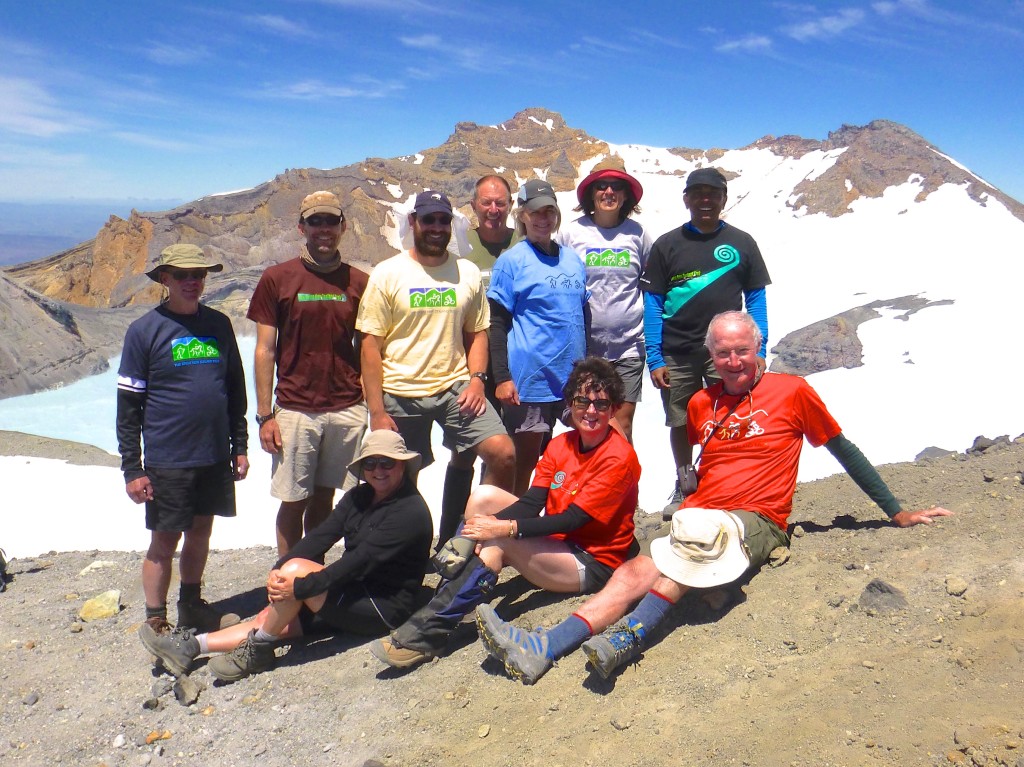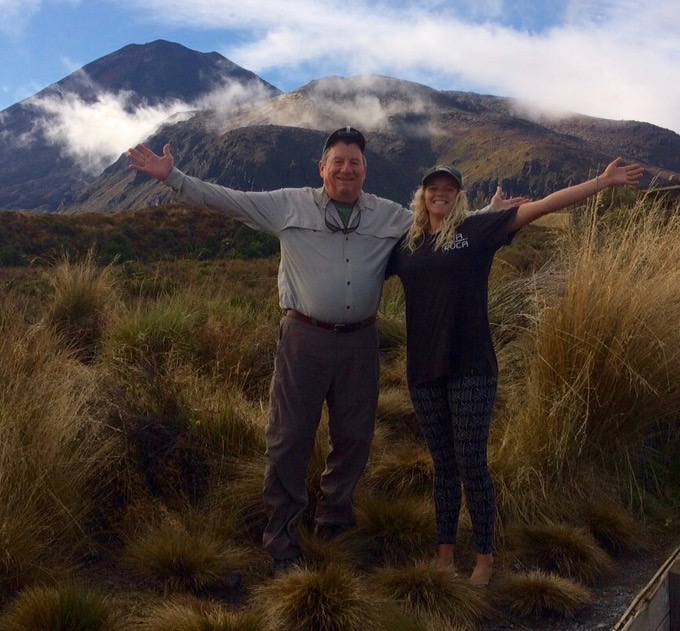 Book now for the Tongariro Alpine Crossing in winter months –
Book now for the Tongariro Alpine Crossing in winter months –
guided by Hannah
 Above is TRM inmate, Jim Rowland from USA, being guided by Hannah on the Tongariro Alpine Crossing yesterday.
Above is TRM inmate, Jim Rowland from USA, being guided by Hannah on the Tongariro Alpine Crossing yesterday.
TRM’s guides escort tourists over the Tongariro Alpine Crossing all year – whenever the weather allows.
In the summer months the crossing is easier – just follow the person in front for 19km.
But. now we are at the end of summer, during the colder winter months a guide is recommended as often the track is covered with snow and more knowledge of the alpine geography and experience of the winter environment is needed.
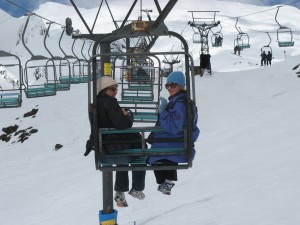 Remember, daylight saving ends on Sunday, so the daylight hours are less and the trek takes longer so accurate time management is essential.
Remember, daylight saving ends on Sunday, so the daylight hours are less and the trek takes longer so accurate time management is essential.
TRM has been guiding tourists for the Tongariro Crossing as well as canoeing, rafting, walking and fishing trips for over ten years. So guests can be confident our guide, Hannah, is familiar with all the local features.
What is even more important during the winter months is the need for a “Plan B” – an alternative option plan to provide for other easier accessible tracks during unsuitable weather conditions.
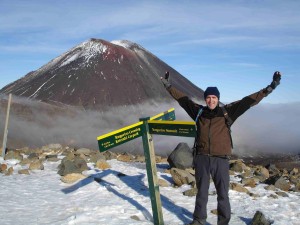 i.e. Generally during the summer months the Tongariro Alpine Crossing might be closed 20-25% of the time due to wind or rain.
i.e. Generally during the summer months the Tongariro Alpine Crossing might be closed 20-25% of the time due to wind or rain.
But during the winter it might only be accessible 20-25% of the time.
Once it snows the alpine crossing turns into a magic wonderland – but it can be dangerous.
Trampers get lost up there when the track is no longer identifiable, covered in snow and merging with the winter landscape like the South Pole. So a TRM guide is strongly recommended.
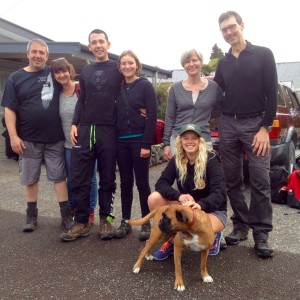 Similarly for other tramps such as the ascent of Mt. Ruapehu. TRM believe this is the number one tramp in this region, but there are no defined tracks and a TRM guide is even more strongly recommended in both summer and winter.
Similarly for other tramps such as the ascent of Mt. Ruapehu. TRM believe this is the number one tramp in this region, but there are no defined tracks and a TRM guide is even more strongly recommended in both summer and winter.
Similarly for several other unmarked tracks such as Mt. Tihia – SWMBO’s favourite – a guide is needed.
Last summer TRM sent parties up there without a guide but they lost the track.
It was not their fault.
They wasted some hours following an old surveyors road to nowhere and never enjoyed the views over Lake Taupo from Mt. Tihia. – see photo on right.
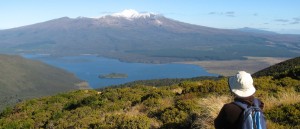 That is not unusual. If only they had taken a guide…
That is not unusual. If only they had taken a guide…
It pays to go with someone who has been there many times before.
TRM’s guide, Hannah, has trained at the Hillary Outdoor Pursuits Centre nearby so is familiar with the local geography. She has all the medical first aid training too.
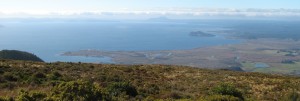 Hannah is keen to go and is waiting to hear from you.
Hannah is keen to go and is waiting to hear from you.
It is wise to phone TRM the day before your walk so SWMBO can advise on the weather conditions and confirm starting time and any other info for your booking.
 Guests are warned to bring with them spare warm wet weather clothes, a good lunch, water, sunscreen, personal medications, a positive attitude and heaps of enthusiasm.
Guests are warned to bring with them spare warm wet weather clothes, a good lunch, water, sunscreen, personal medications, a positive attitude and heaps of enthusiasm.
On right are more of Hannah’s clients ready to start out on the Tongariro Alpine Crossing on 28 March…
At Whakapapa Village (1119m) the average annual rainfall is about 2200 mm, in Ohakune (610m) about 1250 mm and in higher altitudes, such as Iwikau Village (1770m), about 4900 mm. In winter there is snow to about 1500 m.
Temperatures vary dramatically, even within one day.
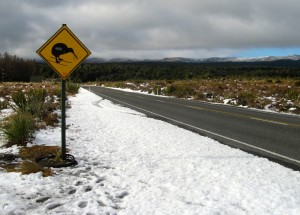 In Whakapapa, they can fall below the freezing point all year round.
In Whakapapa, they can fall below the freezing point all year round.
The average temperature is 13 °C, with a maximum of 25 °C in summer and a minimum of -10 °C in winter.
In some summers the summits of the three volcanoes are covered with snow; on top of Mount Ruapehu, snow fields can be found every summer and the summit is glaciated.
Below is the fabulous A team from the GNZT (Great New Zealand Trek) training by climbing Mt. Ruapehu for their next South Island stage.
 We did not really climb quite that far.
We did not really climb quite that far.
The road above Whakapapa Village to Iwikau and chairlifts beyond that (rise to Knoll Ridge 2020m) took us up most of the way.
I wish we had Hannah guiding us as there is always one (no – not me) who wandered off the obvious route…
Full report on the Ruapehu climb as an alternative to the Tongariro Crossing tomorrow….

